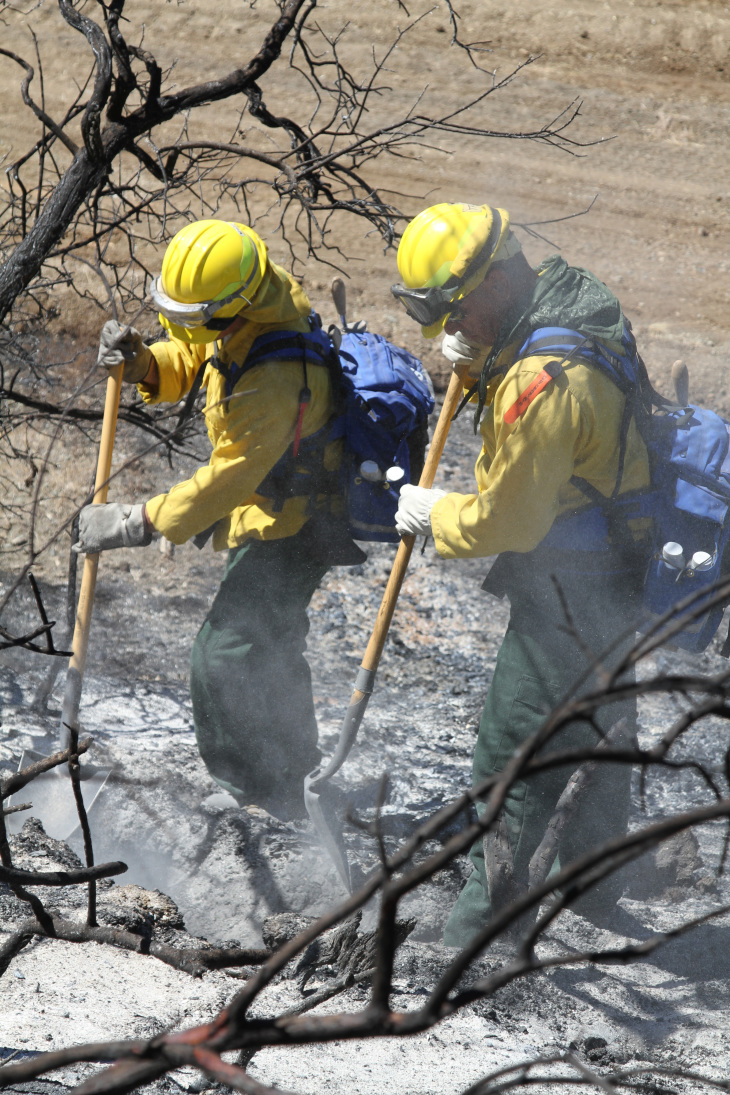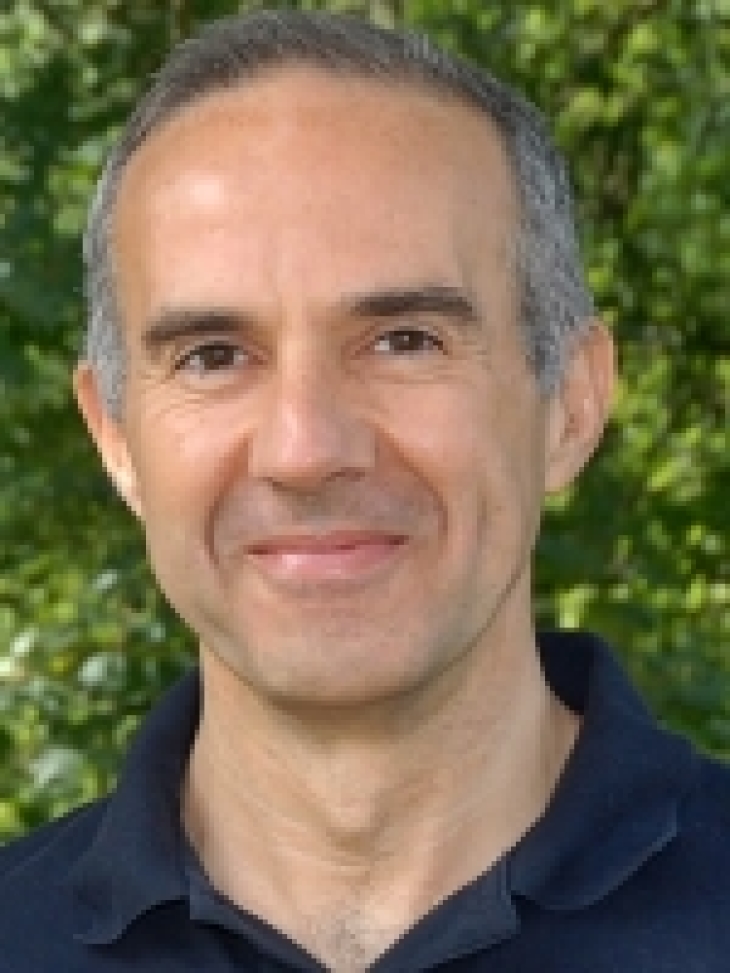Relation between heavy precipitation and forest fires in California
The relations between heavy precipitation and forest fires in California are becoming clearer: an international team of researchers from the Helmholtz Centre Geesthacht (HZG), the University of Hamburg and research institutions from the USA has published a study on this subject in the Proceedings of the National Academy of Sciences, PNAS. Deadly severe wildfires in California have scientists scrutinizing the underlying factors that could influence future extreme events.
![View from space to the fires in November 2018: Strong winds pushed the fire to the south and southwest overnight, tripling its size and spreading smoke over the Sacramento Valley. The image also shows two more fires in southern California, the Hill and Woolsey Fires. [Bild: NASA (Joshua Stevens)] View from space of the forest fires in November 2018](/imperia/md/images/hzg/presse/news/2019/fittosize__730_0_4f2d195efef7b842eafcc40818e7af3c_1280px-2018_nov_9_california_wildfires_via_terra.jpg)
View from space to the fires in November 2018: Strong winds pushed the fire to the south and southwest overnight, tripling its size and spreading smoke over the Sacramento Valley. The image also shows two more fires in southern California, the Hill and Woolsey Fires. [Bild: NASA (Joshua Stevens)]
Using climate simulations and paleoclimate data dating back to the 16th century, a recent study looks closely at long-term upper-level wind and related moisture patterns to find clues.
The new research published by the Proceedings of the National Academy of Sciences USA examines jet stream and moisture patterns in California over a centuries-long time period—1571 to 2013—which is nearly four times longer than the instrumental period of record that begins in the latter part of the 19th century. The length of the study
enhances the understanding of dynamics that may contribute to extreme impacts from wildfires, as well as precipitation extremes. The work provides a stronger foundation and a longer-term perspective for evaluating regional natural hazards within California and the economic risks to one of the world's largest economies.
Between 2012 and 2018, several deadly and costly extreme wildfire events impacted California, including some of the state’s largest and most destructive wildfires on record. In 2018, California experienced some of its costliest, deadliest, and largest wildfires to date, according to records that date back to 1933. Such extreme events, which are tracked by NCEI in its Billion-Dollar Weather and Climate Disasters reports, prompt concern for the future.
North Pacific Jet-Stream

Hard work for the National Guard in August 2018: Near Clearlake, California, during the Jerusalem Fire in Northern California. (Photo of the U.S. Army National Guard / Associate Sgt. Eddie Siguenza)
Each scientist on the research team brought different perspectives and necessary knowledge to the study. These included expertise in paleoclimatology and paleoecology as well as wildfire research. The international, multi-disciplinary approach needed to execute the research underscored the many factors that can contribute to extreme weather and climate events.
The coastal researcher Dr. Eduardo Zorita from the Institute for Coastal Research of the HZG analysed the long-term climate simulations together with barumring data. The influences and effects of precipitation and hot periods can be derived from both data sets.
Moisture in California is largely regulated by the strength and position of the North Pacific Jet (NPJ) stream, high-altitude winds that sweep into the state from the west during the cooler wet season, evaluated in the study between December and February. The strength and position of the winds influence regional conditions that carry over into the warmer dry season, when wildfires are more prone to occur. The wet-season NPJ thus becomes an important precursor of summer fire conditions.
To build a better understanding of the influence of the NPJ over time, scientists focused on winter NPJ variability in a period of over 400 years. Using paleoclimatological and historical data, such as tree rings and historical fire records, past conditions were reconstructed to show connections between the NPJ and moisture and forest fire extremes.
Some results

HZG coastal researcher Dr. Eduardo Zorita analysed the long-term climate simulations in the project together with barum ring data: . [Photo: private]
The team wanted to gain a greater sense of conditions before and after fire suppression methods became more standard in 1904. The researchers constructed a list of low- and high-fire years in the Sierra Nevada for 1600–1903 from the paleo records. Extreme instances from both pre- and post-suppression period were then evaluated.
Very recently, 2017 bucked a pattern seen in the longer record. The severe Tubbs and Thomas fires of 2017, a high-precipitation year, overrode the NPJ’s historical relationship with low fire extremes after cool seasons of very high moisture. Extreme precipitation had compromised the Oroville Spillway earlier that year in addition to bringing about dangerous floods and landslides. Prior to modern fire suppression, the paleoclimatic reconstruction showed no cases of a high-precipitation year coupled with a high-fire year. If warming continues, as is the scientific consensus, then significant wet season rain and snow may not ensure a quiet fire season afterward.
“Recent California fires during wet NPJ extremes may be early evidence of this change,” the paper states.
Publication
- Wahl, Eugene R., E. Zorita, V. Trouet, and A. H. Taylor. Jet stream dynamics, hydroclimate, and fire in California from 1600 CE to present. Proceedings of the National Academy of Sciences Mar 2019, 201815292; DOI:10.1073/pnas.1815292116:
Scientists from the following institutions were involved in the study
• National Center for Environmental Protection, NOAA (USA)
• Tree Ring Research Laboratory der University of Arizona
• Department of Geography and Earth and Environmental Systems Institute der Penn State University
• Helmholtz-Zentrum Geesthacht, Centre for Materials and Coastal Research
Contact
Helmholtz-Zentrum Geesthacht
Institute of Coastal research
Coastal Impacts and Paleoclimate
Presse- und Öffentlichkeitsarbeit
Phone: +49 (0)4152 87- 1648
E-mail contactHelmholtz-Zentrum Geesthacht
